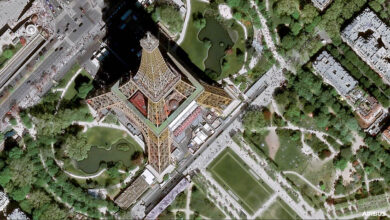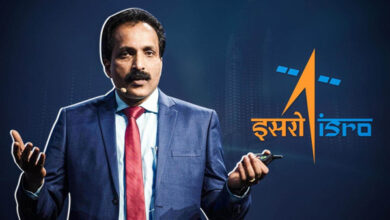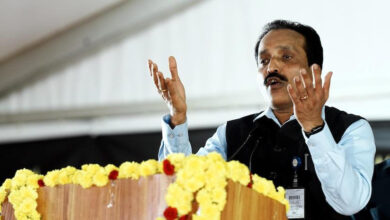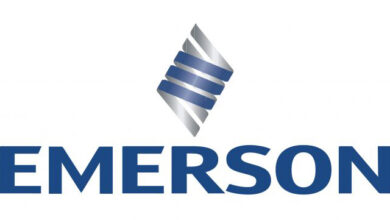Aditya L1 for Global Benefit
ISRO chief S. Somanath shares Aditya-L1 legacy, says the ‘Mission benefits the whole world, not India alone’
By R. Anil Kumar
- Highlighting the scientific importance of the mission, ISRO chief S. Somanath said, “The solar mission, Aditya-L1 is for the whole of the world, not for India alone, for all of us to understand and make use of its scientific importance.”
- “India is right now in most of the areas where it’s scientifically important”, Amitabha Ghosh, NASA SCIENTIST
Bengaluru. Following the successful placement of the Aditya-L1 spacecraft into its designated Lagrange point which is 1.5 million Kms away from earth, the Indian Space Research Organisation (ISRO) Chief S. Somanath emphasised that this significant mission has global implications, extending beyond India.

“The solar mission, Aditya-L1 is for the entire world, not for India alone, for all of us to understand and make use of its scientific importance,” Somanath said.
The ISRO chief said, scientists had to make many changes so that the satellite could be placed precisely.
“Today’s event was only placing the Aditya-L1 in the precise Halo orbit. It was moving towards a high orbit, but we had to do a little bit of corrections to put it in the right place.
Something like 31 metres per second velocity had to be given cumulatively to the satellite to keep it at the right orientation,” Somanath said.
Speaking about the halo orbit where the satellite was being placed Somanath said, “The halo orbit is an orbit which moves around L1 point with a size of 6 lakh kilometres in one dimension and one lakh kilometres in another dimension. It is like an egg. We had to place it in the new orbit. It has to be precisely put.”
If the satellite is not precisely put, it may have escaped from the point. There are some contingencies. But mathematically it can escape. So that has been very precisely done. Today we achieved exact placement based on our measurement and very correct prediction of velocity requirement…So right now, in our calculation, it is at the right place,” Somnath said.
“The thrusters be fired in such a way that the spacecraft takes a stable orbit at the Lagrangian point from which the observation of the sun can be made uninterrupted, continuously for next few years.
The journey commenced in September and while it is going towards the sun, most of the instruments have been calibrated, and they have sent some x-ray images as well as other particle counts as well. That shows the spacecraft is in healthy condition. Once it is in a stable orbit, it will be able to carry out the indented observation of the solar corona phenomena as well as the photosphere and the various activities, especially the solar winds and related radiation,” he said.
During its journey, Aditya-L1 successfully calibrated most of its instruments, showcasing its robust health. The spacecraft, during its journey to the destination since September, has transmitted X-ray images and particle count data. Once in a stable orbit, Aditya-L1 is poised to observe solar phenomena, including the solar corona and photosphere.
“And once it is in a stable orbit, it will be able to carry out the indented observation of the solar corona phenomena as well as the photosphere and the various activities, especially the solar winds and related radiation,” the ISRO chief said.
ISRO placed the Aditya-L1 spacecraft, the first dedicated solar mission, into its final target orbit on 6th of January, marking a key scientific milestone.
NASA SCIENTIST LAUDS INDIA’S SPACE JOURNEY
In a significant stride for India’s space exploration endeavours, the Indian Space Research Organisation (ISRO) successfully manoeuvred its Solar Mission Aditya-L1 into the Halo Orbit, garnering praise from NASA Scientist Amitabha Ghosh.

Ghosh, reflecting on India’s scientific achievements, said, “India is right now in most of the areas where it’s scientifically important.
There is ‘Gaganyaan,’ which is the human space flight part, that is in the works right now. So, it’s been a tremendous stride for the last 20 years. Going from not having a planetary science programme to where we stand today, and particularly after the success of Aditya, it’s been a very remarkable journey.”
The successful launch of the maiden solar mission of the Indian Space Research Organisation (ISRO) came on the heels of the historic lunar landing mission of Chandrayaan 3.
Prime Minister Narendra Modi had said India will continue to pursue new frontiers of science for the benefit of humanity, and the Indian Space Agency has been pursuing it, Ghosh said with all admiration.
Aditya L1 has seven different payloads on board, to conduct a detailed study of the sun, four of which will observe the light from the sun and the other three will measure in-situ parameters of the plasma and magnetic fields.
The largest and technically most challenging payload on Aditya-L1 is the Visible Emission Line Coronagraph or VELC. VELC was integrated, tested, and calibrated at the Indian Institute of Astrophysics’ CREST (Centre for Research and Education in Science Technology) campus in Hosakote, near Bengaluru, in collaboration with ISRO.
This strategic location will enable Aditya-L1 to continuously observe the sun without being hindered by eclipses or occultation, allowing scientists to study solar activities and their impact on space weather in real-time.
Also, the spacecraft’s data will help identify the sequence of processes that lead to solar eruptive events and contribute to a deeper understanding of space weather drivers.
Major objectives of India’s solar mission include the study of the physics of solar corona and its heating mechanism, the solar wind acceleration, coupling and dynamics of the solar atmosphere, solar wind distribution and temperature anisotropy, and origin of Coronal Mass Ejections (CME) and flares and near-earth space weather.





